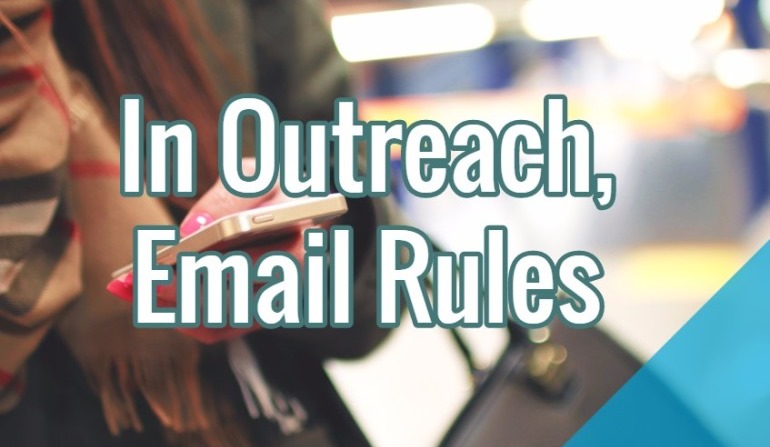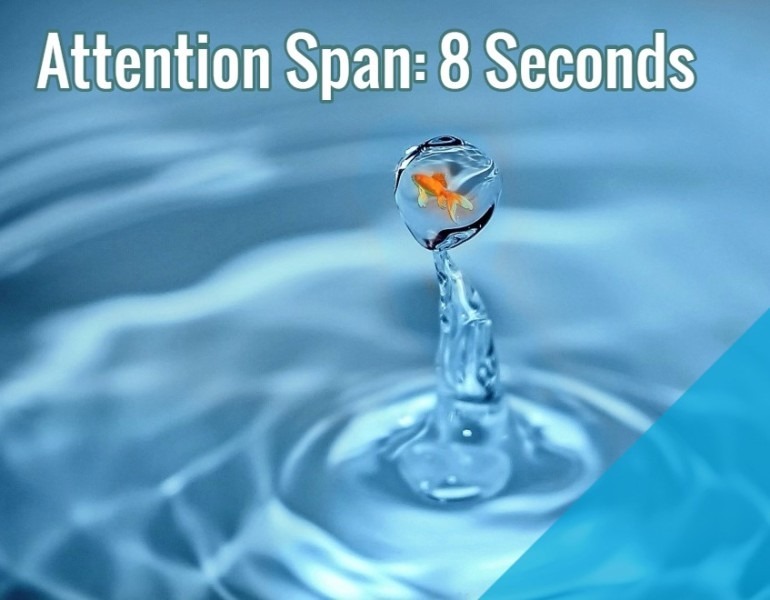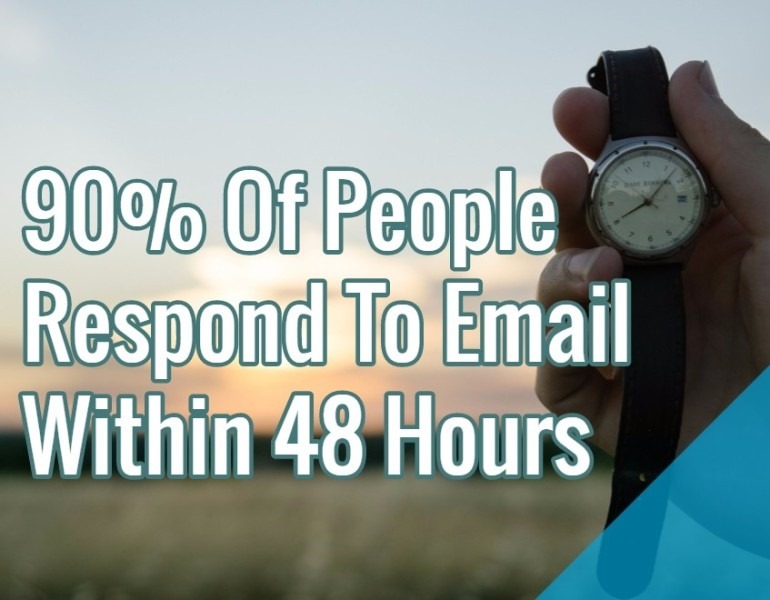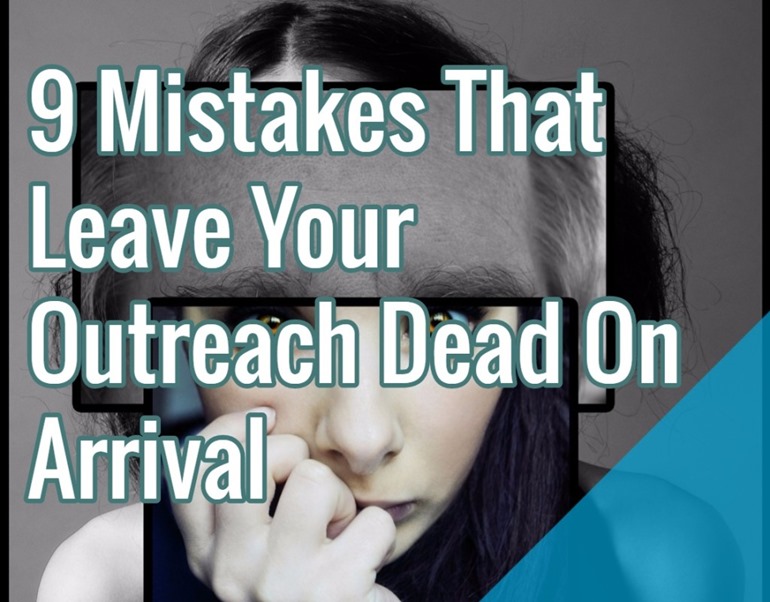Getting attention is one of the major challenges startups and small businesses face. You have a great business, solid products as well as long-term potential. However, you soon realize that you’re going nowhere without getting people to pay attention to you.
Realizing how essential getting attention is, you decided to make outreach a core part of your strategy. There’s only one caveat, though: you’re getting way fewer responses than you anticipated or even no response at all. This is a major problem, isn’t it?
There’s a right and wrong way to go about outreach, but some mistakes simply kill your outreach efforts right from the start.
By all means, you want to avoid the following nine mistakes that leave your outreach dead on arrival:
1. Not Using Email As Primary Channel

According to an Edelman study, 64% of journalists prefer to receive pitches and follow ups via email . A cision study also shows that 55 percent of people revealed that they weren’t successful in their attempts to pitch via social media. While there are several ways of reaching out — such as phone, social media, etc. — email still rules.
It is important to conduct your outreach efforts via email; there are times when your target might prefer to be reached out to via phone or social media, or where you simply observe that people get more response using these means, but — unless otherwise specified — email is still the best way to reach out to people.
2. Weak Subject Lines

Can you guess how many emails are sent per second? Research shows that approximately 2.5 million emails are sent every second — that’s a lot of emails, and it isn’t slowing down anytime soon.
There’s so much competing for the inbox of your targets, so don’t expect to have an easy ride; one of the best ways to increase your chances of having an effective outreach is to use strong, persuasive subject lines.
In fact, strong email subject lines might just be the only way to get a response after all; according to a Greentarget study, 79 percent of journalists say that subject lines greatly affect whether they will open your email. That’s such a strong chance to compete against!
3. Not Using The KISS Principle
It is very important to embrace the KISS (Keep it Simple, Stupid) principle if you want to get good results from your outreach efforts.
According to a 2015 Microsoft study, we now have a shorter attention span than a goldfish; the Microsoft study involved 2112 people, and it found that our attention span has declined from twelve seconds in 2000 to eight seconds now.

The Greentarget study earlier referenced also revealed:
- 70% of journalists spend less than 1 minute on each email they open
- 68% of journalists want the facts and nothing more
- 53% of journalists prefer if you deliver the facts in bullet points
You have less than one minute to communicate what you want to your outreach subject, so use it judiciously. Remember, you’re not writing a love letter.
4. Not Following Up On Time
The question of when to follow up after emailing an editor and not hearing back is the million dollar question, but you don’t have to be in doubt anymore. Research has found the answer.

A recent study by the USC Viterbi School of Engineering, that studied over 16 billion emails exchanged by more than 2 million users, found that 90% of people respond to emails within 48 hours.
With decreasing attention spans, and the overwhelming amount of emails sent to people on a daily basis, if someone is yet to get to your email in 48 hours then it is likely drowned in their inbox.
It’s very simple. If you get no response after 48 hours of sending your outreach message, follow up.
5. Not Having A Social-Worthy Story
Another highlight from the Edelman study earlier referenced is the fact that 76% of journalists feel pressure to think of the share-worthiness of the story they cover. If a story has little or no potential to go viral on social media, journalists have little incentive for covering it.

Articulate why
your
story is share-worthyThe solution to this isn’t to just ensure your story is presented in a way that makes it share-worthy, but to actually articulate the reasons why you think it has the potential to be a big hit on social media. Remember, there has to be something in it for everybody.
6. Not Highlighting The Fact That You’re Successful
Remember the aphorism, “The rich get richer and the poor get poorer?” Well, it couldn’t be truer when performing outreach. Most media outlets and publications make it clear they prefer experts and thought leaders, and most journalists won’t pay attention to you if you’re a nobody.

There’s no place for modesty in outreach. Wear your success like a badge; if you’ve received a major award, were on a major show, achieved an unusual feat or been featured or published on a major publication, be sure to make it known. Doing this makes you more credible and trustworthy, and it will lead to you getting more positive response to your outreach efforts.
7. Lack Of Personalization
Research shows personalization can increase response rate by up to 303%
Most journalists simply ignore outreaches that don’t personally address them. Simply saying, “Hello sir!” or “Hey there!” is no longer going to work.

If you are sending an email to a particular person, the least you could do is find out the name of that person and address him or her accordingly.
8. Reaching Out To A General Address
When trying to reach out to major brands or publications, the most advocated means — even by the publications — is to reach out to them via a generic email or contact form. Well, don’t.
67% of emails are spam, and big publications and brands are not exempted; reaching out via a generic email address will only ensure one thing: that you don’t get a response.

The solution, instead, is to find out who is the decision maker; if you want your story covered on a major publication, who will be publishing that story? Find out who that person is and reach out directly. You’ll be increasing your chances of success this way.
9. Pitching From A Generic Email Address
Generic and free email addresses can significantly hurt your chances of a successful outreach — most influencers make it clear that they ignore emails from generic email addresses. These makes sense considering the fact that most spam emails come from these addresses due to the low barrier to entry associated with creating them.

It’ll cost you nothing to create an email address associated with your own domain name, so make sure you use that for your outreach. It will go a great length to boost your response rates.
Hand-Picked Related Articles:
- The Tactical Guide To Promoting Your Content
- How To Do Blogger Outreach The Right Way
- 4 Quick Ways To Find An Email Address and Other Contact Details
* Adapted images: ![]() Public Domain, pixabay.com via getstencil.com
Public Domain, pixabay.com via getstencil.com
Getting attention is one of the major challenges startups and small businesses face. You have a great business, solid products as well as long-term potential. However, you soon realize that you’re going nowhere without getting people to pay attention to […]
Post from: Search Engine People SEO Blog
9 Mistakes That Leave Your Outreach Dead On Arrival
—
Written by John Stevens, https://hostingfacts.com
The post 9 Mistakes That Leave Your Outreach Dead On Arrival appeared first on Search Engine People Blog.
Search Engine People Blog(65)








